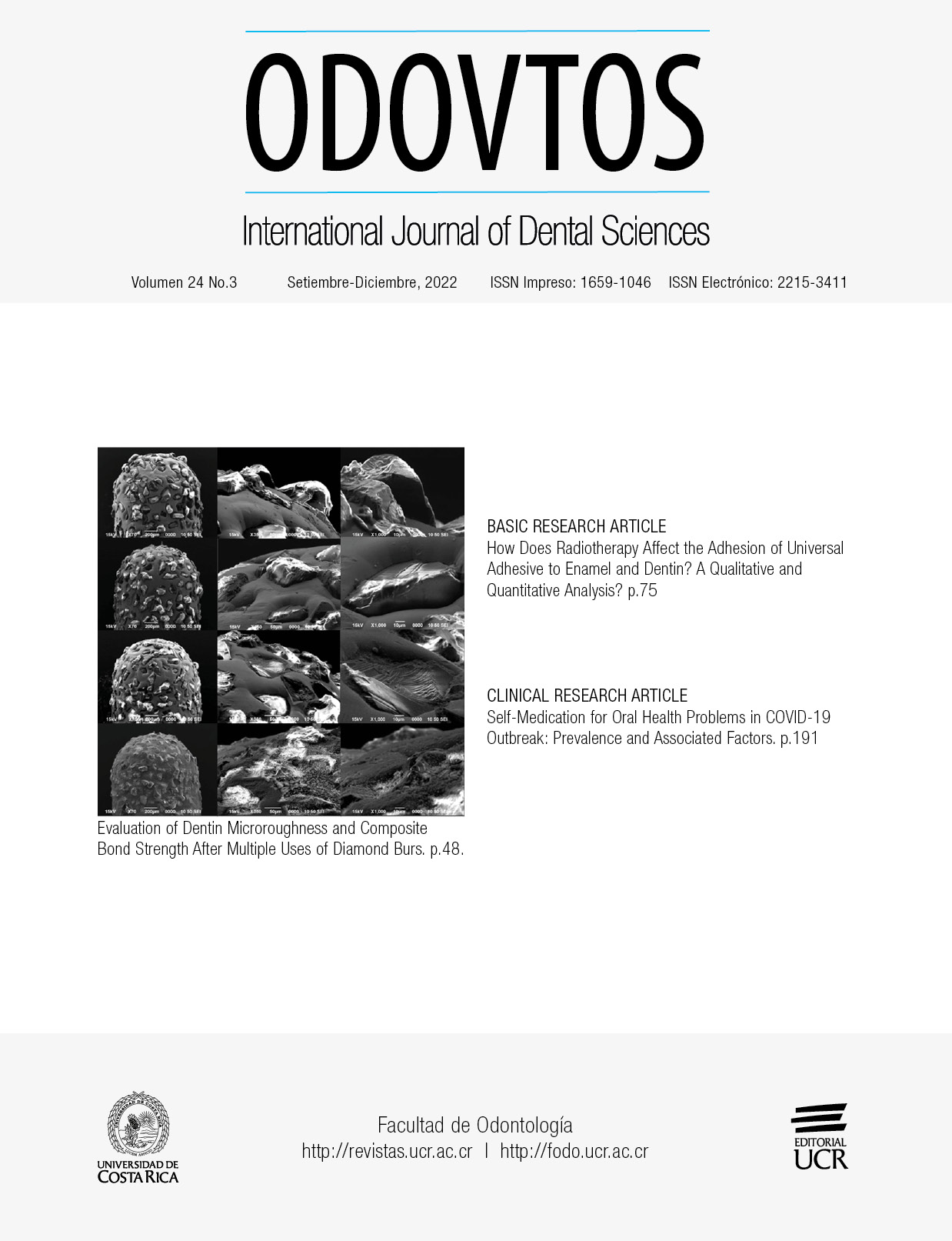Resumen
Es nuestro objetivo en este artículo discutir los conceptos actuales sobre el bruxismo, un tema que ha sido motivo de discusión en el campo odontológico durante muchos años. Se han hecho esfuerzos internacionales recientes para desafiar las viejas definiciones de bruxismo; esto ha derivado en un consenso y en la actualidad un nuevo concepto que define al bruxismo como un comportamiento en lugar de un trastorno. Como conducta, se explica en esta revisión cómo puede tener consecuencias negativas para la salud, puede ser inocuo y cómo nuevas investigaciones avalan que el bruxismo puede incluso ser un factor protector. En este artículo se exponen diferentes factores etiológicos, así como la influencia de mecanismos externos e internos relacionados como: medicamentos, estrés emocional, factores sistémicos y posibles vías farmacológicas. Además, se resume brevemente el papel de los aparatos orales en el bruxismo del sueño. Finalmente, se presentan consideraciones clínicas y la recomendación para el profesional en odontología con respecto a los signos que deben ser observados durante el examen clínico son parte de esta revisión.
Citas
Manfredini D., Colonna A., Bracci A., Lobbezoo F. Bruxism: a summary of current knowledge on aetiology, assessment and management. Oral Surg. 2020; 13 (4): 358-70.
Klasser G.D., Pain C.O., Rei N., Lavigne G.J., Frcd C. Sleep Bruxism Etiology : The Evolution of a Changing Paradigm.
Greene C., Manfredini D. Treating Temporomandibular Disorders in the 21st Century: Can We Finally Eliminate the “Third Pathway”? J Oral Facial Pain Headache. 2020; 34 (3): 206-16.
Alicia Ommerborn M., Giraki M., Schneider C., Michael Fuck L., Handschel J., Franz M., et al. Effects of sleep bruxism on functional and occlusal parameters: A prospective controlled investigation. Int J Oral Sci. 2012; 4 (3): 141-5.
Raphael K.G., Sirois D.A., Janal M.N., Wigren P.E., Dubrovsky B., Nemelivsky L. V., et al. Sleep bruxism and myofascial temporomandibular disorders: A laboratory-based polysomnographie investigation. J Am Dent Assoc [Internet]. 2012; 143 (11): 1223-31. Available from: http://dx.doi.org/10.14219/jada.archive.2012.0068
Manfredini D., Colonna A., Bracci A., Lobbezoo F., De Luca Canto G., Singh V., et al. Are bruxism and the bite causally related? Oral Surg. 2014; 13 (2): 58-64.
Mesko M.E., Hutton B., Skupien J.A., Sarkis-onofre R., Moher D., Pereira-cenci T., et al. Soft versus hard occlusal splint therapy in the management of temporomandibular disorders (TMDs). Syst Rev [Internet]. 2014; (10): 1-15. Available from: http://dx.doi.org/10.1186/s13643-016-0397-z
Balasubramaniam R., Klasser G.D., Cistulli P.A., Lavigne G.J. The Link between Sleep Bruxism, Sleep Disordered Breathing and Temporomandibular Disorders: An Evidence-based Review. J Dent Sleep Med [Internet]. 2014 Apr 10; 1 (1). Available from: https://aadsm.org/docs/JDSM.01.01.pdf
Herrero Babiloni A., Beetz G., Dal Fabbro C., Martel M.O., Huynh N., Masse J.F., et al. Dental sleep medicine: Time to incorporate sleep apnoea education in the dental curriculum. Eur J Dent Educ. 2020; 24 (3): 605-10.
Lobbezoo F., Ahlberg J., Raphael K.G., Wetselaar P., Glaros A.G., Kato T., et al. International consensus on the assessment of bruxism: Report of a work in progress. J Oral Rehabil. 2018; 45 (11): 837-44.
Lavigne G.J., Khoury S., Abe S., Yamaguchi T., Raphael K. Bruxism physiology and pathology : an overview for clinicians *. 2008; 476-94.
Carra M.C., Huynh N., Fleury B., Lavigne G. Overview on Sleep Bruxism for Sleep Medicine Clinicians. Sleep Med Clin [Internet]. 2015; 10 (3): 375-84. Available from: http://dx.doi.org/10.1016/j.jsmc.2015.05.005
Bayar G.R., Tutuncu R., Code TUS, Malheiros A.S., Carvalhal S.T., Pereira T.L., et al. Review of clinical EMG studies related to muscle and occlusal factors in healthy and TMD subjects. J Oral Rehabil [Internet]. 2004;13 (2): 212-23. Available from: http://dx.doi.org/10.1016/j.tripleo.2008.10.007
Machado E., Machado P., Cunali P.A., Dal Fabbro C. Sleep bruxism: Therapeutic possibilities based in evidences. Dental Press J Orthod. 2011; 16 (2): 58-64.
Schiffman E.L., Fricton J.R., Haley D. The relationship of occlusion, parafunctional habits and recent life events to mandibular dysfunction in a non-patient population. J Oral Rehabil. 1992; 19 (3): 201-23.
Karakoulaki S., Tortopidis D., Andreadis D., Koidis P. Relationship Between Sleep Bruxism and Stress Determined by Saliva Biomarkers. Int J Prosthodont. 2015; 28 (5): 467-74.
Huynh N., Lavigne G.J., Lanfranchi P.A., Montplaisir J.Y., De Champlain J., Dutra K.M.C., et al. Oro-facial activities in sleep bruxism patients and in normal subjects: A controlled polygraphic and audio-video study. Sleep. 2006; 29 (2): 86-92.
Huynh N., Lavigne G.J., Lanfranchi P.A., Montplaisir J.Y., De Champlain J. The effect of 2 sympatholytic medications - Propranolol and clonidine-On sleep bruxism: Experimental randomized controlled studies. Sleep. 2006; 29 (3): 307-16.
Huynh N., Kato T., Rompré P.H., Okura K., Saber M., Lanfranchi P.A., et al. Sleep bruxism is associated to micro-arousals and an increase in cardiac sympathetic activity. J Sleep Res. 2006; 15 (3): 339-46.
Guaita M., Högl B. Current Treatments of Bruxism. Curr Treat Options Neurol. 2016; 18 (2): 1-15.
Clark G.T., Stiles A., Lockerman L.Z., Gross S.G. A Critical Review of the Use of Botulinum Toxin in Orofacial Pain Disorders. Dent Clin North Am. 2007; 51 (1): 245-61.
Awan K.H., Patil S., Alamir A.W.H., Maddur N., Arakeri G., Carrozzo M., et al. Effects of botulinum toxin on jaw motor events during sleep in sleep bruxism patients: A polysomnographic evaluation. J Pain. 2020; 99 (3): 281-93.


